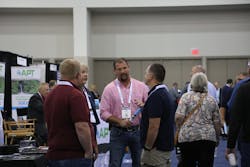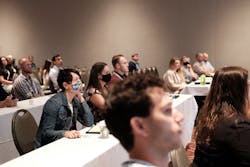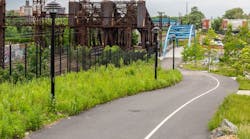As of October, 6,000,000 acres have burned this year in the U.S. from wildfires. This has occurred mostly in the West — but in regions not experienced previously. Fire behavior analysts and firefighters on the ground are reporting new, never seen fire behavior, with fires rapidly ascending elevations and still burning hot at night, which has historically been a time for reprieve.
More intense fires are also burning deeper into the soil layer, increasing the destruction of the vegetation holding soil in place. When rain does come, flash floods create massive debris flows or mudslides that can cause more fatalities than the fires themselves.
Debris flows can also foul water supplies. The 2017 fire season and the early 2018 Thomas Fire directly caused two fatalities, but the post-fire mudflows caused 21 deaths, 163 injuries and 1,063 destroyed buildings in California’s Santa Barbara and Ventura counties. As wildfires affect more wildland-urban interfaces, the environmental damage released from urban pollutants has become a greater challenge. Poor air quality from global wildfires is estimated to contribute to tens of thousands of deaths worldwide.
The Fire and Rain sessions in previous StormCon conferences have dealt with post-fire issues, mostly erosion control, and world-renown experts in this field have been front and center in helping develop and deliver these events. However, pre-, active, and post- fire lines of action are not simple vectors. Fire activity is a cycle: Post-fire activities are also pre-fire mitigation for the next fire.
Stormwater management also has a role to play in pre-fire preparation and planning, as well as in active fire suppression. In pre-fire, the slowing and retaining of water is critical for maintaining moisture in vegetation so as not to dry out and become a fuel source.
Infiltration has consistently been an important part of Stormwater conference presentations and webinars. Rainwater catchment can be a tool for vegetation management and another tool for fire suppression, if focused on those fire-prone communities in the West. While we may not be able to hold water in all the millions of acres in the West, it may make sense to do so in high-risk communities — especially for the federal, state, county and municipal buildings there.
This year’s panel reflected an interdisciplinary, cross-organization approach and the beginning of Fire and Rain Version 2.0. Panelists Jay Selby, Ed Schenk, Steven Miller and David Stark shared their project experiences and their special areas of expertise in pre-fire, active fire suppression and post-fire mitigation strategies.
The presenters shared their use of interactive GIS mapping routines, drones and other aerial assets in predicting fuel loads, water infiltration into the soil layer, fire suppression and debris flow paths. New tools, technologies and strategies have been deployed to address these new fire behaviors. Where there are new methods, technologies and tools, the development of new workforce skills to implement them must follow.
Toward that end, the Continuing Education Group at Endeavor Business Media has launched several initiatives to address workforce development. The group has developed several next-level interactive on-demand online courses and webinars, available via Stormwater University. The group has also partnered with the American Rainwater Catchment Systems Association to offer Rainwater Harvesting System Designer and Installer courses, to be deployed over the next few months. SW
About the Author: Jeremiah Woolsey is the continuing education director for Endeavor Business Media. Email him at [email protected].
Published in Stormwater magazine, November 2021.







